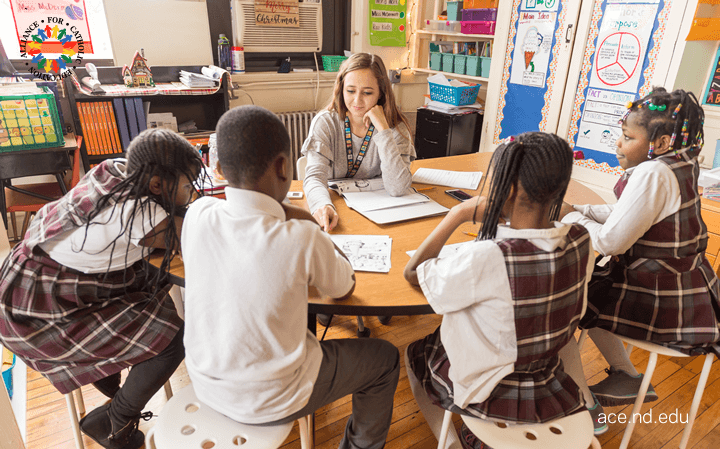Beyond the social justice and civil rights perspectives that guide us to serve the marginalized in our classrooms, we have an additional reason to reinforce the need to pay attention to this population. Jim Wright, a school psychologist and the creator of Interventioncentral.org, says, "The quality of a school as a learning community can be measured by how effectively it addresses the needs of struggling students."
Those of us called to teach in Catholic schools can relate to this premise; however, we also identify with the Catholic Social Teaching of the preferential option for the poor and vulnerable and believe that our schools might be morally tested by evaluating how their most vulnerable members are faring (USSCB). The outcome of this evaluation could be disconcerting given our current work. Inclusion of this population has historically been under-represented, and moreover, our ability to serve them has often been ineffective.
Children have the right to reach their God-given potential in Catholic schools, and it's our responsibility to ensure it happens. Some schools have clear systems of support, offices, and even departments dedicated to this special population of students. While we're certainly making more advances in inclusive education in Catholic schools, we're faced with the familiar refrain of relying on limited resources and the classroom teacher to fill in the gaps.
In 2017, the Council for Exceptional Children, the CEEDAR center, and others published 22 High Leverage Practices (HLPs) for special educators. An HLP is a teaching practice that, when done effectively, increases student learning. These are game changers for programs training educators to serve this population. These HLPs were written, selected, and published to improve methods for supporting teachers during formation and to guide them to effective practice within the classroom.
These practices were developed knowing that teachers need research-based guidance. The HLPs are broad enough that they can be applied to any content area and can be articulated, taught, and practiced in many settings. The depth of each practice is intentional providing enough detail to be clearly visible in practice, but expansive enough to preserve the integrity and complexity of teaching.
To provide a bit of context, HLPs that support struggling learners include the most critical practices in collaboration, assessment, social/emotional/behavioral practices, and instruction. From establishing a consistent, organized, and respectful environment (HLP 7) to providing scaffolded supports (HLP 15) while collaborating with families to support student learning and secure needed services (HLP 3), these practices are supportive of student achievement for this population and should be utilized in the classroom.
Scaffolding, for example, can help students bridge the gap in a cognitive stretch. When it comes to writing in a new format or style, a teacher might provide an organizer, a long standing evidence-based practice to help structure and support the student to begin writing. In math, if a student is learning to tell time on an analog clock, a teacher might first make a linear timeline out of notecards (representing five-minute increments each) connected by brads or fasteners. When ready, the student can manipulate the timeline into a circle like a clock. Visually seeing the increments of five in a circular shape makes the concept of telling time concrete, and the timeline serves as a support to scaffold the student up to understanding.
What does this mean for practicing teachers in Catholic schools?
HLPs are not context specific. Rather, they were developed for all educators who teach struggling learners and students with disabilities. Given this population is currently enrolled in our schools and sitting in our classrooms (Program for Inclusive Education), we must look to the research to most effectively serve them. These HLPs provide a pathway to student success by providing a playbook of foundational methods that impact student outcomes. HLPs support educators...ALL educators - Catholic included!
Looking to add some inclusive strategies to your classroom? Sign up for the PIE Newsletter and get our "17 Strategies for Inclusion" eBook!
 Alliance for Catholic Education
Alliance for Catholic Education
